Wawu Mountain Scenic Area is located in Hongya County, Meishan City, Sichuan Province. It is a World Natural Heritage site and a national 4A-level tourist attraction. The scenic area covers an area of approximately 1.04 million mu (about 693.33 square kilometers), with the core scenic area spanning around 105 square kilometers. The main peak of Wawu Mountain stands at an altitude of 2,830 meters and gets its name from its flat, tabletop-like summit—it is the largest table mountain in China and was praised by British botanist Ernest Wilson as "a huge Noah's Ark above the clouds". The scenic area is characterized by primeval forests, rare animals and plants, waterfalls, streams, and unique geological landscapes. With a forest coverage rate of over 98% and a maximum negative ion concentration of 30,000 per cubic centimeter, it is a natural oxygen bar.
History and Culture
Wawu Mountain is one of the birthplaces of Taoism in China. Research shows that the spread of Taoism here can be traced back to the Eastern Han Dynasty. According to legend, Laozi (the founder of Taoism) once refined elixirs here, leaving behind relics such as the "Laozi's Elixir-Refining Platform". During the Tang and Song Dynasties, Taoism on Wawu Mountain reached its heyday, with 108 temples of various sizes built on the mountain. Today, relics such as Guangxiang Temple and Xiang'er Temple still remain.
Wawu Mountain is also an important site for Buddhist activities and is known together with Emei Mountain as the "Two Wonders of Shu" (Shu is an ancient name for Sichuan). Buddhist culture and Taoist culture have blended with each other here. In addition, Wawu Mountain is a treasure trove of rare animals and plants. It is home to more than 3,600 species of plants, including 13 national first-class protected plants such as Davidia involucrata (dove tree) and Taxus chinensis (Chinese yew), as well as 19 national first-class protected animals such as giant pandas and golden snub-nosed monkeys. It is one of the 25 global biodiversity hotspots.
Major Attractions
Westward View of Gongga Mountain
This is a viewing platform located at an altitude of approximately 2,678 meters, offering a distant view of Gongga Mountain (the "King of Sichuan Mountains").
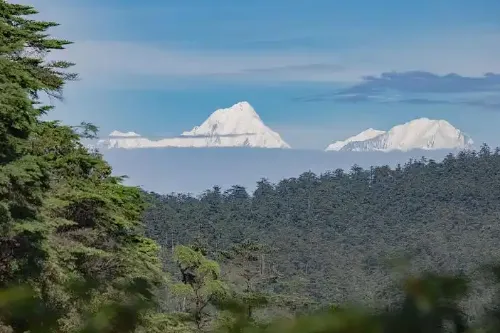
Xiang'er Villa
Located in the core area of Wawu Mountain at an altitude of about 2,500 meters, Xiang'er Villa is an ideal spot to enjoy sea of clouds, sunrise, and Buddha's light. Surrounded by dense primeval forests, it is cool and pleasant in summer and covered in snow in winter. As an important gathering and resting place for tourists in the scenic area, it is equipped with restaurants, accommodation, and other facilities.
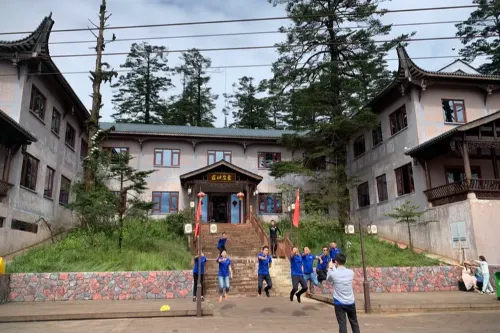
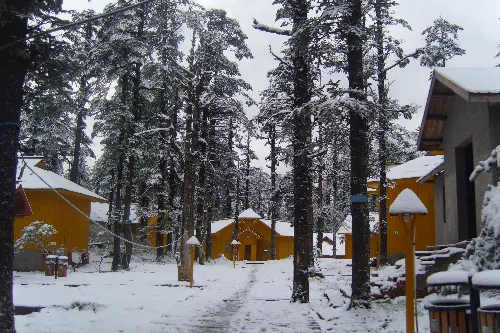
Xiang'er Rock
Situated at an altitude of about 2,686 meters, Xiang'er Rock (literally "Rock That Resembles You") offers a spectacular sight: when the sun shines and there is mist, a colorful halo forms, and the viewer's shadow is projected in the halo—moving as the viewer moves. It is a perfect place to watch sunrise, sea of clouds, Buddha's light, sacred lamps, divine lamps, and the full view of Yanü Lake.
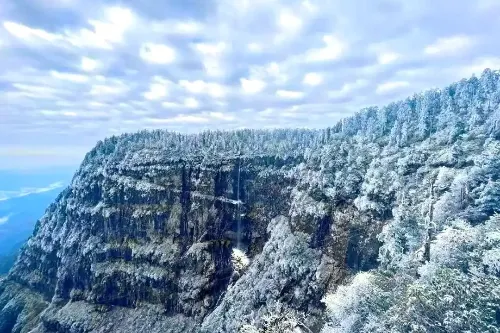
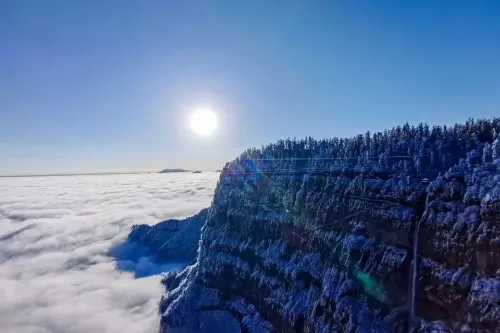
Lanxi Waterfall
With a height of approximately 1,040 meters, Lanxi Waterfall is one of the tallest waterfalls in Asia. Composed of three tiers, the waterfall rushes down from the mountain top with great momentum. The surrounding area is rich in vegetation and has an extremely high concentration of negative ions—strolling here feels like being in a natural oxygen bar.
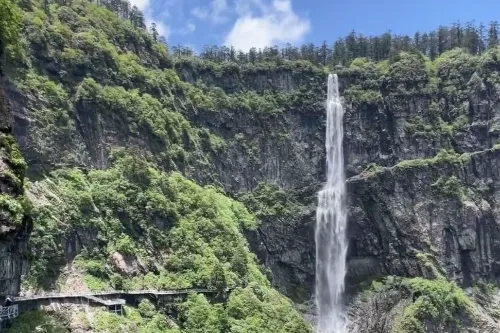
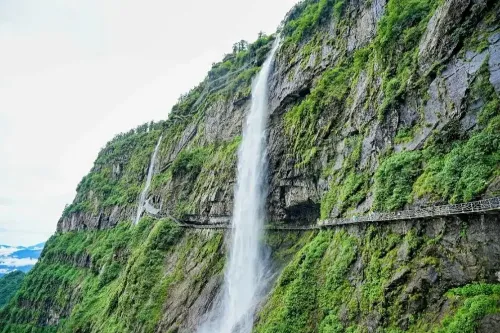
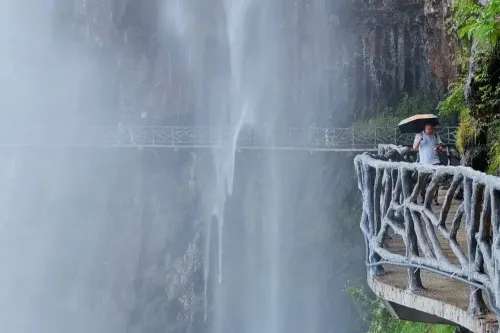
Lanxi Mouth
Located at an altitude of about 2,662 meters, Lanxi Mouth is the source of Lanxi Creek, which originates from the "Mihun Danggou" (a mysterious valley known for its disorienting fog) and stretches for approximately 2,500 meters, flowing non-stop throughout the year. The creek forms the 1,040-meter three-tiered Lanxi Waterfall. Lanxi Mouth is one of the spots to witness the spectacle of "three suns" and the best location to view the full view of ice curtains, ice waterfalls, and Yangxi Waterfall.
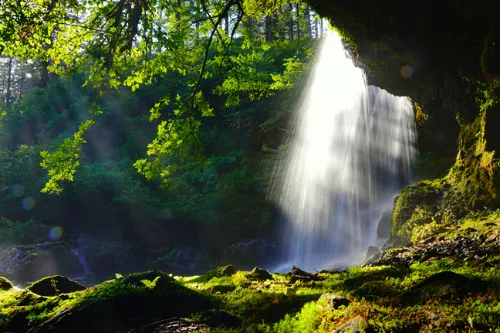
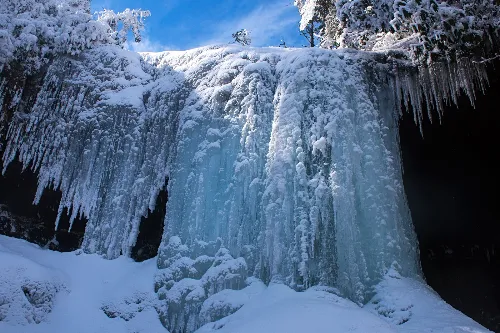
Yuanyang Pool (Mandarin Duck Pool)
Yuanyang Pool is a natural lake on the top of Wawu Mountain, located at an altitude of about 2,522 meters and covering an area of approximately 100 mu (about 6.67 square kilometers). The lake water is crystal clear, surrounded by fir forests. In summer, water birds such as mandarin ducks often inhabit the lake surface; in winter, it turns into a snowy wonderland with charming scenery.
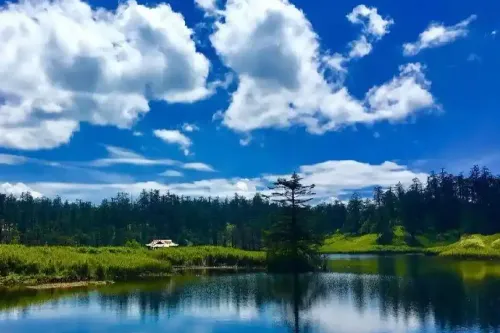
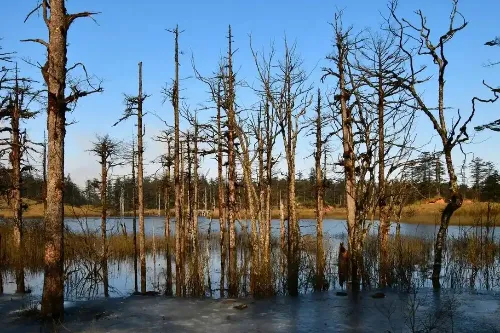
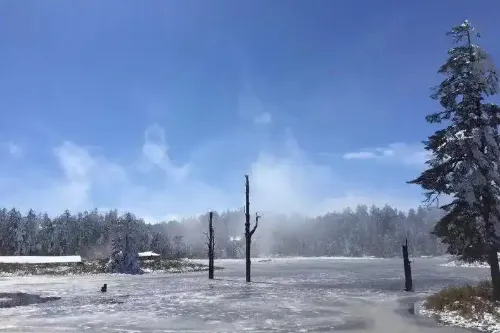
Azalea Flower Sea
Wawu Mountain boasts one of the largest azalea flower seas in China, with over 60 species of azaleas. From April to June each year, azaleas of various colors bloom sequentially from the foot to the top of the mountain, creating a blooming period lasting for several months. Among them, the "Azalea King" on the mountain top is the most famous—it has a history of over 1,000 years and a chest circumference of 3.5 meters.
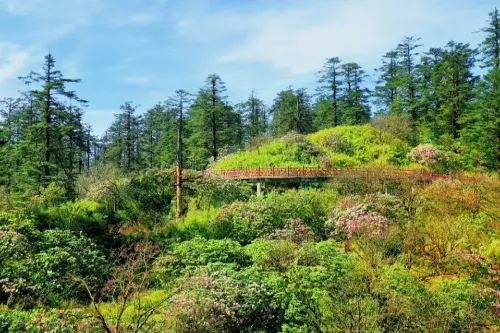
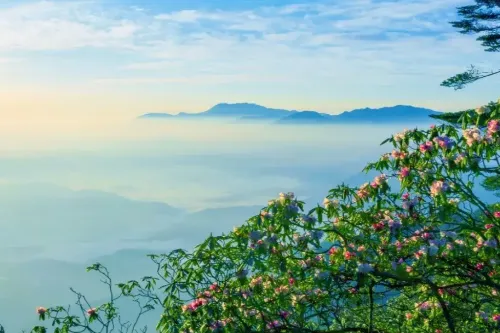
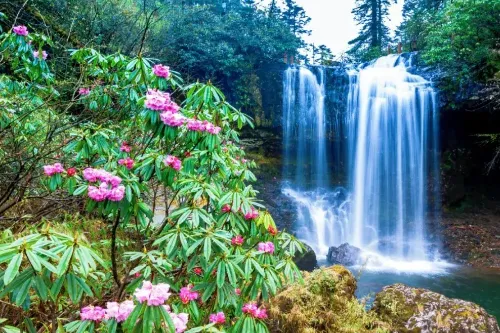
Gufo Ping (Ancient Buddha Flatland)
Located at an altitude of about 1,900 meters, Gufo Ping is an important transportation hub in Wawu Mountain Scenic Area, with a cable car station and a sightseeing bus transfer point. Surrounded by towering ancient trees and featuring beautiful scenery, it is one of the starting points for hiking and the best place to view Davidia involucrata flowers. From April to May each year, the Davidia involucrata flowers (shaped like flying white doves) dot the forest.
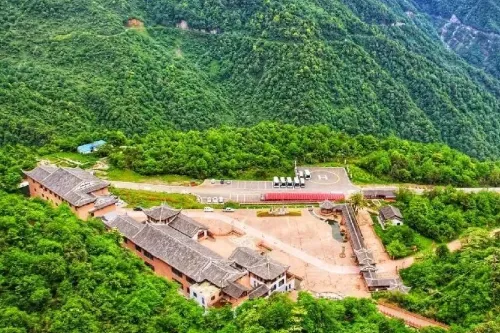
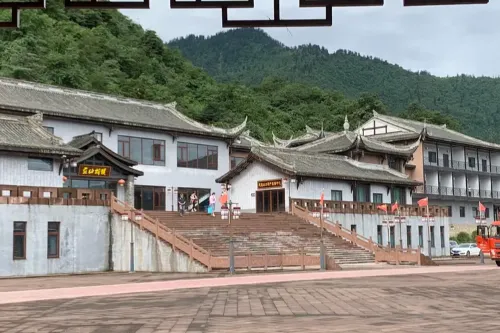
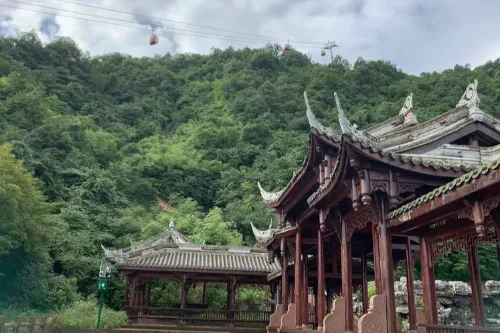
Sansing Waterfall
At an altitude of about 1,631 meters, Sansing Waterfall has a drop of approximately 300 meters. Originating from the underground river of Wawu Mountain, it flows continuously throughout the year and is particularly spectacular in summer.
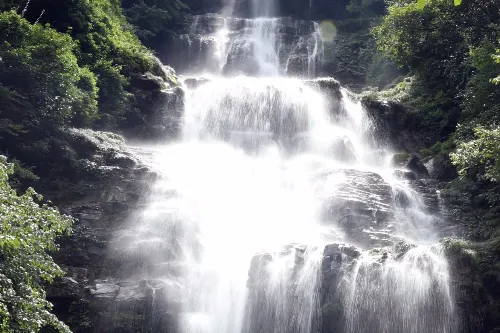
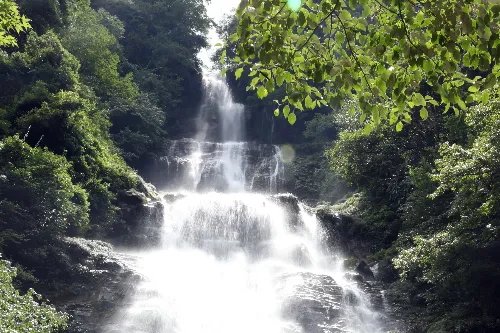
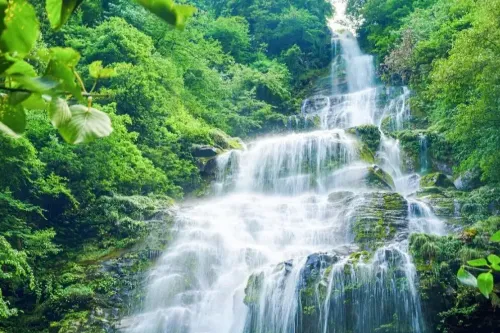
Waterfall Viewing Pavilion
Located at an altitude of about 1,700 meters, this pavilion is an excellent spot to view Sansing Waterfall and Dafa Waterfall. Originating from Dafa Cave and Sansing Cave respectively, the two waterfalls are nearly 300 meters apart and have a drop of about 100 meters.
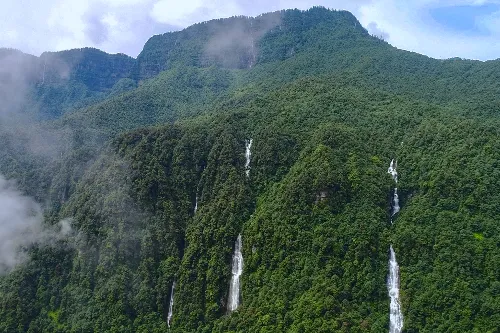
Recommended Tour Routes
One-Day Tour Route: Tourist Center → Take a sightseeing bus to Gufo Ping → Take the cable car to Xiang'er Villa → Visit nearby attractions of Xiang'er Villa (viewing platforms for sea of clouds, sunrise, and Buddha's light) → Hike to Lanxi Waterfall → Return to Xiang'er Villa → Take the cable car back to Gufo Ping → Take the sightseeing bus back to the Tourist Center. This route covers the main natural landscapes of the scenic area and takes approximately 5-6 hours in total.
Two-Day Tour Route: Day 1: Tourist Center → Take a sightseeing bus to Gufo Ping → Take the cable car to Xiang'er Villa → Visit Xiang'er Villa and Yuanyang Pool → Hike to Lanxi Waterfall → Return to Xiang'er Villa for accommodation. Day 2: Xiang'er Villa → Hike to the Azalea Flower Sea → Take the cable car back to Gufo Ping → Take a sightseeing bus to Yanü Lake → Tour Yanü Lake → Return to the Tourist Center. This route allows for an in-depth experience of the scenic area's natural and cultural landscapes, taking about 2 days in total.
Travel Tips
- Wear non-slip hiking shoes, as most paths in the scenic area are stone-paved roads or boardwalks, and some sections are steep.
- Bring clothing suitable for the season: sun protection is needed in summer, while cold protection is necessary in winter. The temperature at the mountain top is 8-10℃ lower than at the foot of the mountain.
- Carry sufficient water and snacks, as there are relatively few catering outlets in the scenic area and their prices are relatively high.
- Check the weather forecast in advance and avoid hiking in severe weather such as heavy rain or strong winds.
- For visitors with limited physical strength, it is recommended to take the cable car to save energy for visiting more attractions.
- Summer is the best season to enjoy waterfalls and azaleas, while winter is ideal for skiing and viewing ice-snow landscapes.
Notes
- Smoking and open fires are prohibited in the scenic area; please pay attention to forest fire prevention.
- Protect the environment: do not litter or pick flowers and plants randomly.
- Abide by the scenic area regulations and do not enter unopened areas without permission to avoid danger.
- There are wild monkeys in the scenic area; do not feed them casually to prevent being scratched.
- Follow the order and pay attention to safety when taking sightseeing buses and cable cars.
- The area is at a high altitude; visitors with hypertension, heart disease, or other illnesses should hike with caution.
- Some road sections are covered with ice and snow in winter; it is necessary to rent crampons and pay attention to anti-slip.
Transportation
- Self-driving: Depart from Chengdu, take Chengya Expressway and Yaye Expressway to Hongya County, then drive about 50 kilometers along Wawu Mountain Tourist Highway to reach the scenic area. The whole journey takes approximately 3 hours.
- Passenger transport: There are direct buses from Chengdu Xinnanmen Bus Station and Chengdu Chadianzi Bus Station to Wawu Mountain Scenic Area, with 1-2 departures per day. The journey takes about 3.5 hours.
- High-speed rail: Take a high-speed rail from Chengdu to Meishan East Station, then transfer to a bus to Hongya County, and then switch to a bus to Wawu Mountain. The whole journey takes about 4 hours.
- Internal transportation of the scenic area: Traffic control is implemented in the scenic area; visitors must take sightseeing buses and cable cars from the Tourist Center to enter the core scenic area.
Opening Hours
The scenic area is open year-round. - Peak season (March 1 - November 30): 08:00 - 17:00 - Off-season (December 1 - February 28 of the following year): 08:30 - 16:30 Ticket sales end 1 hour before closing time. The opening hours may be adjusted in case of special weather or holidays; it is recommended to check through official channels before traveling.
Tickets
Free admission to the scenic area.
Jinhuaqiao Cable Car (round trip): 88 yuan per person
Sightseeing Bus (round trip) + Gufoping Cable Car (round trip): 166 yuan per person
Sightseeing Bus (round trip): 68 yuan per person
Jinhuaqiao Cable Car (round trip) + Gufoping Cable Car (round trip): 186 yuan per person
You can search for the official WeChat public account "瓦屋山景区" to get the latest updates or book tickets online.
Online Booking
Click here to jump to the Trip.com ticketing platform for ticket purchase.


